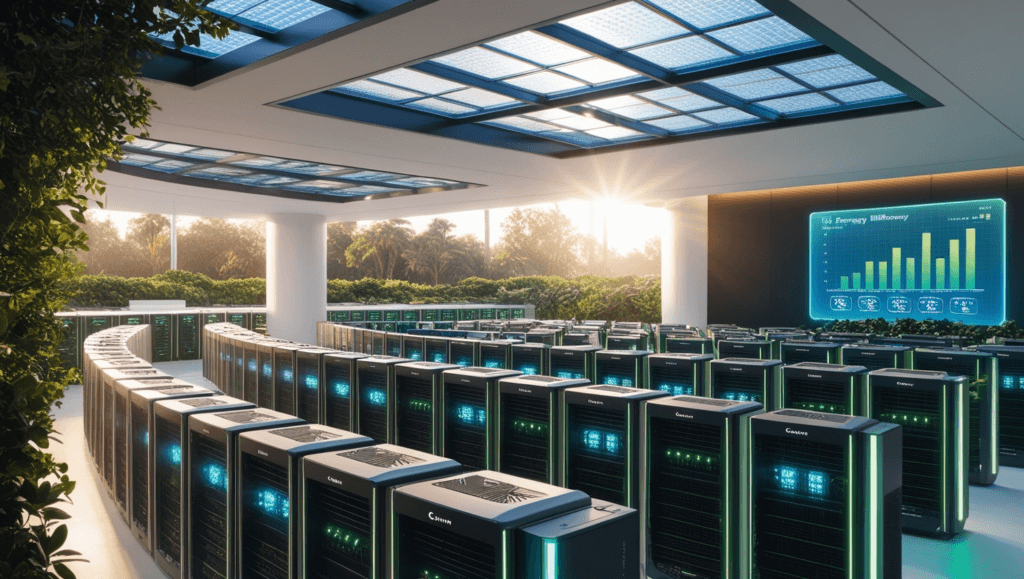How Lower AI Costs Affect Energy Use
AI systems have always needed huge amounts of power. Training a single model can use as much electricity as a small town does in a year. But DeepSeek’s methods cut these costs sharply. When companies spend less money on AI, they often use less energy, too. This happens because cheaper AI usually means smarter code, better hardware use, or fewer wasted steps. For example, DeepSeek’s systems might skip unnecessary calculations that older models force servers to grind through. This saves money and reduces the load on power grids.
The energy savings don’t stop at the data center. When AI tasks take less time, servers can shut down sooner, cutting idle power use. A recent test by a tech firm in California showed that DeepSeek’s models completed tasks 40% faster than older systems, letting servers go into low-power mode for longer periods. If every AI company adopted these methods, global energy use for tech could drop fast. This shift could also ease the strain on power grids during peak hours, reducing the need for backup coal or gas plants.
The Problem With Traditional AI and Climate Goals
Most AI today works against climate progress. Data centers that train big models often run on fossil fuels. Cooling these systems needs even more power, sometimes from coal or gas plants. Even tech firms that buy “green” energy credits can’t always prove they’re cutting real-world emissions. This gap matters because the Paris Agreement calls for halving emissions by 2030. If AI keeps growing at today’s rate, it could eat up 10% of the world’s electricity by 2030. That’s like adding another Germany to the global power grid.
DeepSeek’s approach flips this script. By making AI cheaper to run, it could shrink the tech industry’s carbon footprint before climate deadlines hit. For instance, a data center in Texas cut its yearly carbon output by 12% after switching to similar methods—equal to taking 8,000 cars off roads. If this trend spreads, it could help countries meet their climate goals without sacrificing tech growth.

Where DeepSeek’s Savings Help the Planet
DeepSeek’s team focused on two things: trimming code and using hardware better. Their models avoid repetitive tasks that waste server time. They also design chips that handle AI jobs with fewer circuits active at once. This means less heat and lower cooling needs. One study found that DeepSeek’s systems use 75% less power per task than older models.
These savings add up fast. A single data center running DeepSeek’s models could save enough energy in a year to power 10,000 homes. If this tech spread to major data hubs, like those in Virginia or Beijing, it could delay the need for new coal plants. For example, a tech firm in India reported a 30% drop in energy bills after switching to DeepSeek’s tools, while still meeting customer demands.
Who Benefits From Affordable, Green AI?
Energy companies are already using cheap AI to manage wind and solar farms. DeepSeek’s tools predict when turbines will fail or where to place panels for maximum sun. Farmers in drought-prone regions test AI that spots crop stress early, saving water and fuel. Even shipping firms use these models to plan routes that burn less diesel.
But the biggest win might be in climate science. Teams modeling hurricanes or heatwaves need huge computing power. Cheap AI lets them run more simulations faster, helping towns prepare for disasters. A lab in Florida used DeepSeek-based tools to map flood risks for 20 cities at half the usual cost. These tools also help small towns that can’t afford expensive software. For example, a rural community in Kenya used AI to plan a water system that cut energy use by 20%.
What Happens When AI Costs Less Than a Human Worker?
Mines in Australia already use AI trucks that drive themselves 24/7. These machines cost less than paying drivers and don’t need breaks. But if every mine adopts this, will companies dig up more coal because it’s cheaper? Cheap AI could create similar risks in logging, oil drilling, or factory farming.
The key is steering the tech toward sustainability. Governments might tax AI used for fossil fuel projects but subsidize it for clean energy. Brazil’s forest agency, for example, pays farmers to use AI that tracks tree health instead of clearing land. In the U.S., some states offer grants for AI tools that reduce water use in farming. These policies could ensure cheap AI helps the planet instead of harming it.
Can We Trust Companies to Prioritize the Planet?
]When firms save money with AI, they don’t always reinvest in green projects. A 2023 report found that 60% of tech companies cut energy costs but didn’t reduce emissions. To fix this, watchdogs push for laws that tie AI use to climate goals. The EU now requires data centers to report energy sources and efficiency yearly.
If DeepSeek’s partners follow these rules, they could prove their tools help the planet. Startups like a solar firm in Kenya share their energy stats openly, building trust with customers who care about sustainability. Transparency could also push bigger firms to act. For example, a major cloud provider in Europe now publishes monthly reports on how much renewable energy its AI systems use.
What You Can Do Right Now
Ask your boss or local leaders how they pick AI tools. Do they know where the power comes from? Could they switch to providers like DeepSeek that focus on efficiency? Schools and nonprofits can push for grants to test green AI in community projects—like tracking air quality or optimizing bus routes.
If you code, explore open-source projects that make AI leaner. Share articles or case studies that show how cheaper tech doesn’t have to cost the Earth. The next time you hear about AI, ask: Is this helping the climate crisis or making it worse?
